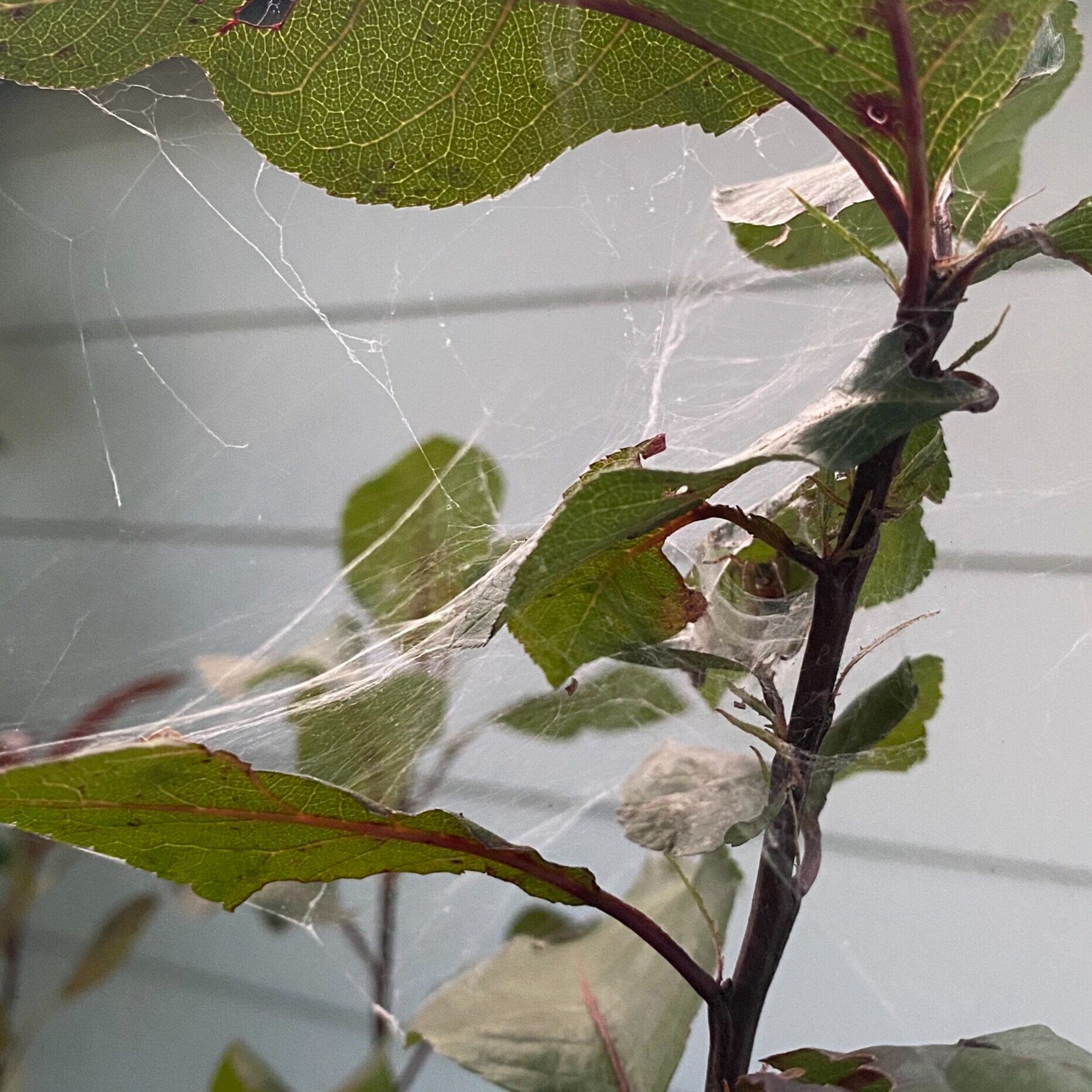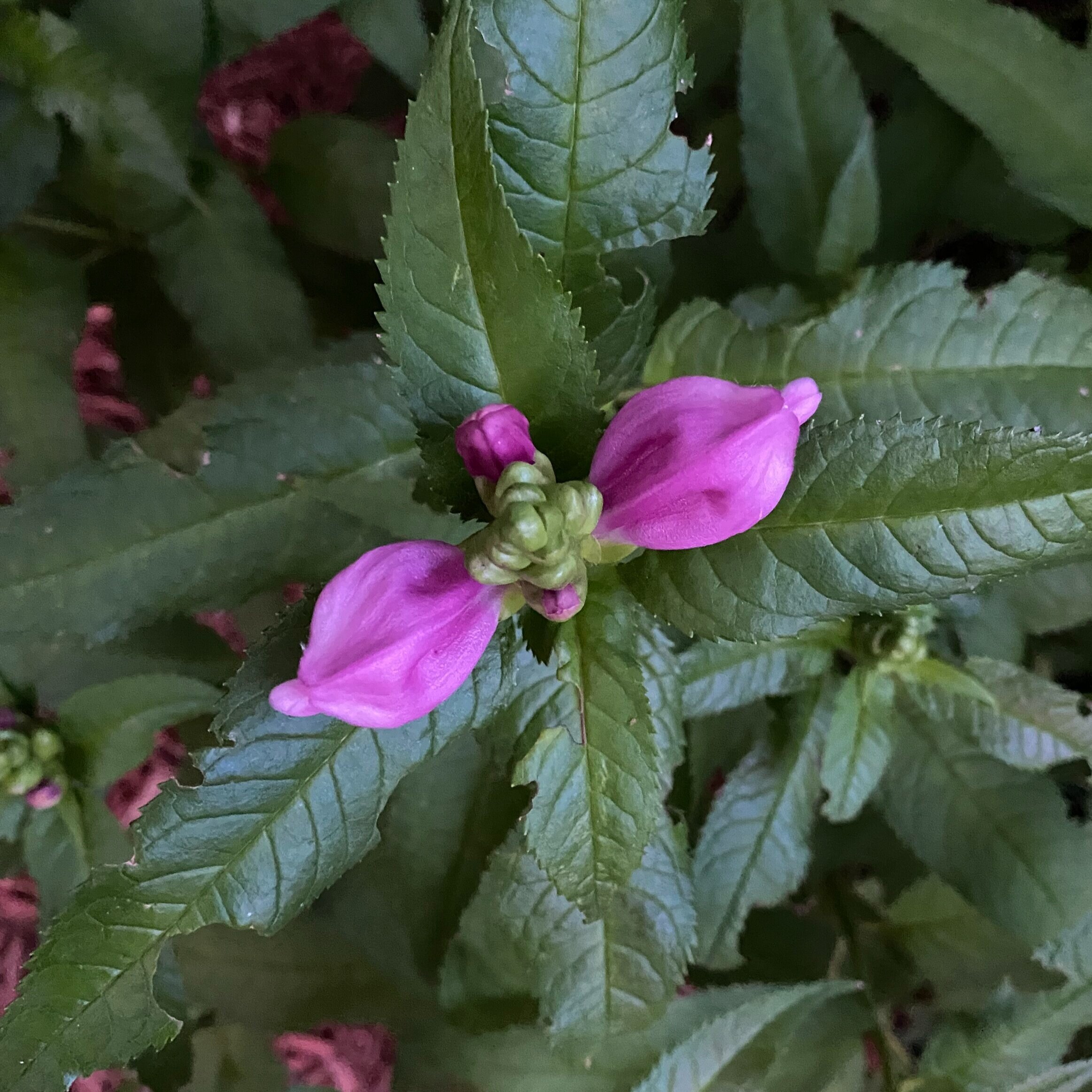BCI Post #3
9.5.2021, Backyard
Another beautiful, sunny evening, (74℉)
Today I observed the systems in my nature-space. It was easier to find calm this evening, the sun was setting and I had a great day outside with friends. Again my focus was on the plants, trees, and creatures in my backyard.
The elm trees provide nutrients to the ants and invasive aphids, mulch providing a hospitable environment for mold, a spider web, and the system of the flowering turtlehead plant I observed yesterday. The trees and turtlehead are nourished by the soil and water from rain, sunlight provides energy and helps to synthesize sugars to keep them healthy. The root systems of the plants and trees are likely all interconnected and work together to maintain life throughout this drought-ridden summer.
I took a close look at the spider web, it had created a cocoon-like den for itself as it awaits its prey. The spider is nourished by the insects that thrive when there is moisture in their environment and it uses an environment (leaves, stems, ect.) created by a plant in order to spin a successful web.
As I sat, wandered, and observed I noticed how my body connected with my environment through my senses. I observed the sound and considered how the shape of my ear directs soundwaves into my ear, to my brain, and I then interpret those vibrations as crickets chirping, car horns blaring, and the sound of the wind rustling the leaves above. There were many other systems at play here, my respiratory system, nervous system, circulatory system, etc.
The entire system of my backyard creates an ecosystem in itself, one that inhabits many birds, rabbits, plant life, and insects. All of these organisms function together, nourish each other, and challenge each other to survive. The spider is dependent on the plant it built its web on to provide shelter and to lure insects. This system will evolve as the temperature changes, the plant will wilt, the spider may die, or the spider may lay eggs, which will develop into more spiders that will move on to their own habitat.
The spider operates on a very small scale, with it’s very intricate web, but I also considered the vast network of roots beneath my feet. Roots from the trees that have been planted to 20+ years, 10+ years, and the new cedar trees that may only be 3-5 years old. The variety of plant life is also interconnected, some with roots deep into the ground and others that may just skim the surface. All of these plants are interconnected in a beautiful system of biodiversity on a tiny piece of land in the middle of a city.
Relating to these systems, I see the different levels of interconnectedness within an organization - how each level supports another, which department may be more reliant on others that some that may be more self-sufficient. With this knowledge and creating a new design I need to focus on “function” - what is the intended function of a product? In leather goods, what is the function of the crossbody bag? Why is there a need for pockets or why would I use one material over another? What is the function of a bag if it were lined? What is the function of a bag if it were not? How does this bag add value to the consumer? How does the shape relate to its functionality? To its construction? To the aesthetics? To the environment?


